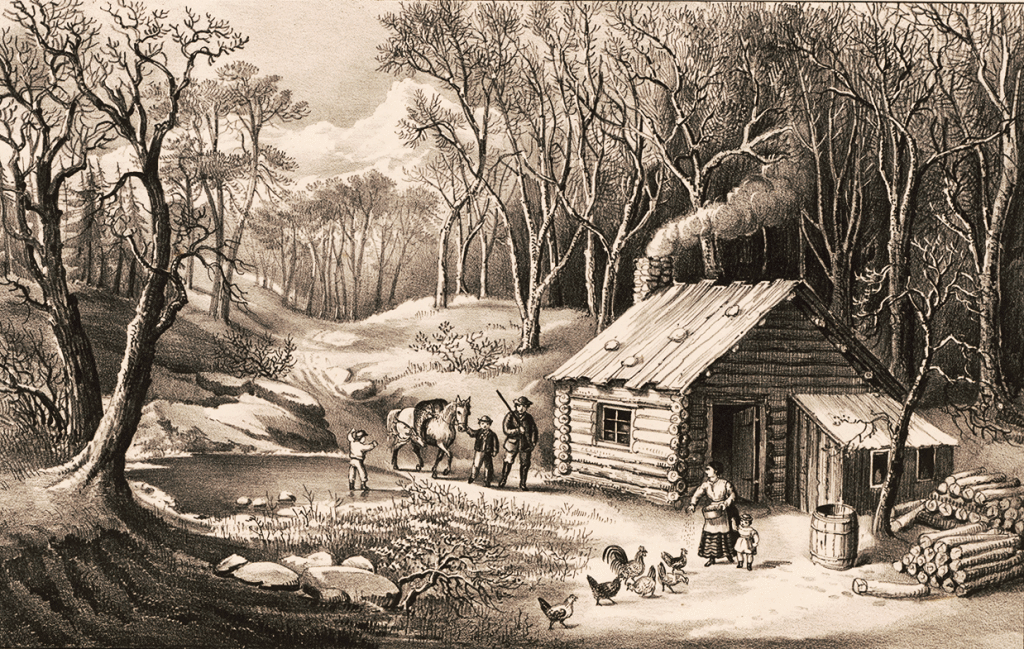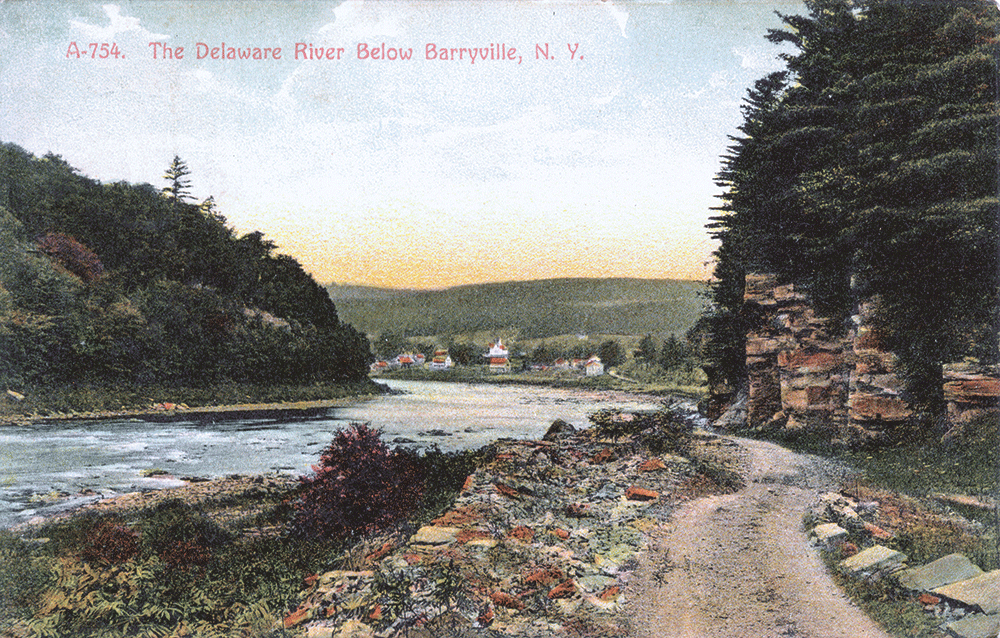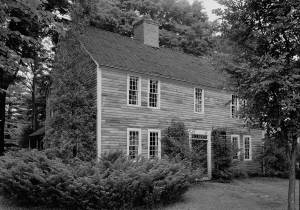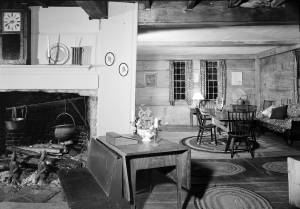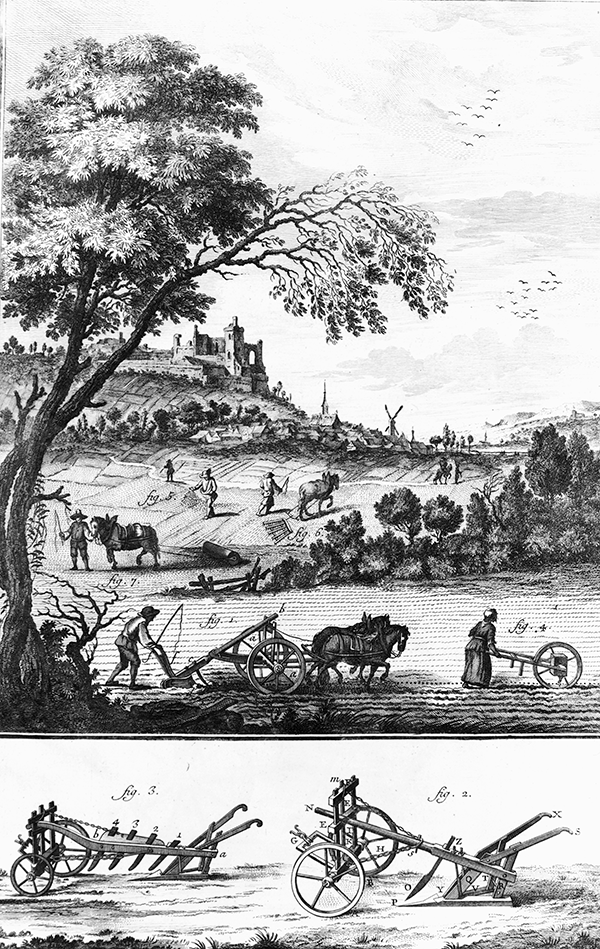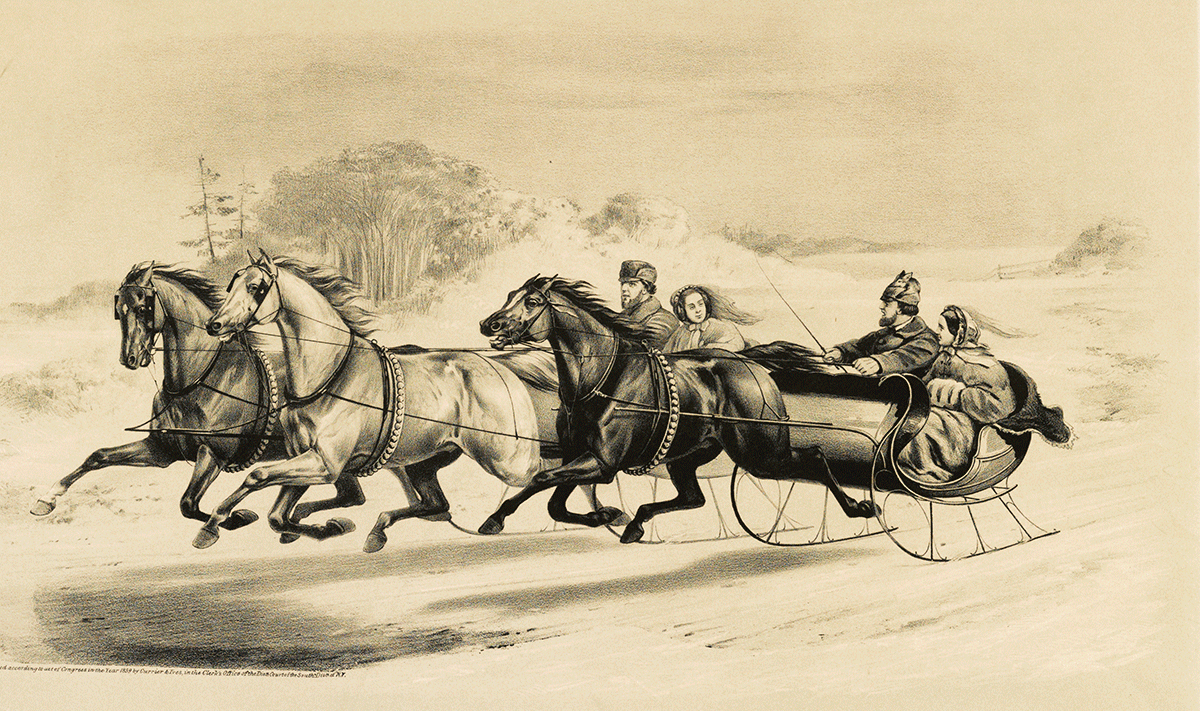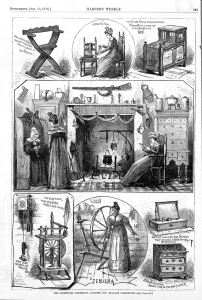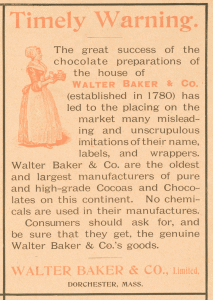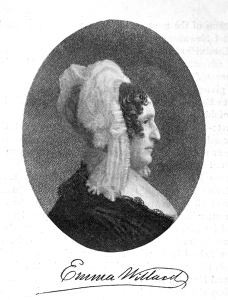
Emma Hart was the sixteenth child of Samuel Hart and the ninth child of Mr. Hart and his second wife Lydia. Samuel encouraged his daughter Emma to love learning, reading, and to think for herself.
In 1802 when Laurilla and Cyrinthia Smith attended Sarah Pierce’s Litchfield Female Academy, Emma Hart, fifteen, attended the Berlin Academy in Connecticut, for the first time. By 1806 Emma was in charge of the academy for a term.
In 1807 Emma was principal of the Middlebury Female Seminary, in Vermont, where Emma met and married physician John Willard.
(In March of 1813 Emma’s younger sister Almira Hart stayed at the Smith home for three or four weeks to copy Laurilla’s paintings.)
In 1814 Emma, champion for equal education for young women, opened a boarding school for girls in her own home (in Vermont) so they could study the same subjects her nephew took at College.
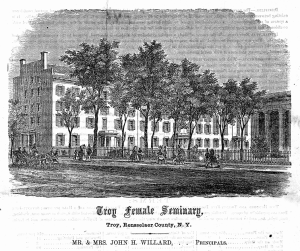
Emma Hart Willard strongly believed that young women should be offered the same subjects as men took in college. At the time finishing schools, which mainly taught social graces, were thought to be the correct education for girls. Emma faced similar opposition to educating women as Sarah Pierce had in 1790.
Using her teaching experience in Vermont, Emma wrote a pamphlet, A Plan for Improving Female Education. In 1819 hoping the New York Legislature would fund a seminary for women as they did men’s schools, Emma presented her plan. She explained that some of the weakness in female education was because the Legislatures undervalued “the importance of women in society.” Finishing schools, which majored on protocols and etiquette, were expensive and not a good value. “Another error” was that educating women had been “to prepare them to please” men. Continue reading

